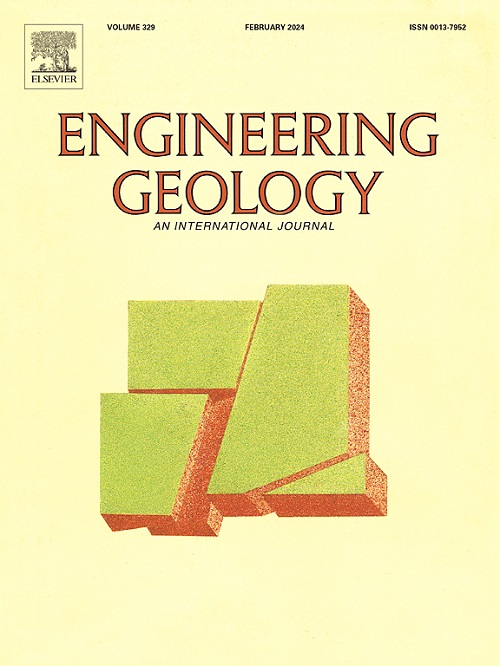Study on the propagation law of blast-induced vibration waves in landfill
IF 6.9
1区 工程技术
Q1 ENGINEERING, GEOLOGICAL
引用次数: 0
Abstract
When a tunnel is constructed using drilling and blasting techniques beneath a landfill, investigating the propagation laws of blast-induced vibration waves within the landfill is crucial for ensuring the successful construction of the tunnel and maintaining the stability of the landfill. This study, based on on-site monitoring data, employed the Complete Ensemble Empirical Mode Decomposition with Adaptive Noise-Hilbert transform (CEEMDAN-HT) method to conduct a detailed analysis of typical blasting signals. The results indicate that the blast-induced vibration waves attenuated with distance from the blast source. The liner at the bottom of the landfill and landfill body accelerated the attenuation. These led to a reduction in peak particle velocity (PPV), a decrease in total energy and an increased proportion of energy in the low-frequency band. Maximum single-stage charge and elevation led to an increase in PPV, an augmentation of total energy, and an elevated proportion of energy in the low-frequency band of the vibration wave, which were highly unfavorable for the stability of the landfill. Zero-crossing frequency was more appropriate as the main frequency of blasting vibration waves in the landfill. The applicability of classical formulas for predicting main frequency and PPV in landfills was validated using measured data. Additionally, site-specific prediction formulas for main frequency and PPV were proposed through dimensional analysis, which aligned well with on-site monitoring data. The results of this study can offer reference for the design of blasting parameters and construction control in similar engineering projects.
垃圾填埋场爆破振动波传播规律研究
当采用钻孔爆破技术在垃圾填埋场下建造隧道时,研究爆炸诱发振动波在垃圾填埋场内的传播规律对于确保隧道的成功施工和保持垃圾填埋场的稳定至关重要。本研究基于现场监测数据,采用自适应噪声希尔伯特变换(CEEMDAN-HT)方法对典型爆破信号进行详细分析。结果表明,爆炸诱发的振动波随离震源距离的增加而衰减。填埋场底部衬垫和填埋场体加速了衰减。这导致峰值粒子速度(PPV)降低,总能量减少,低频能量比例增加。最大单级装药和高程导致PPV增大,总能量增大,振动波低频能量所占比例增大,对垃圾填埋场的稳定性极为不利。以过零频率作为垃圾填埋场爆破振动波的主频率较为合适。通过实测数据验证了经典公式预测垃圾填埋场主频率和PPV的适用性。通过量纲分析,提出了场址主频率和PPV的预测公式,与现场监测数据吻合较好。研究结果可为类似工程的爆破参数设计和施工控制提供参考。
本文章由计算机程序翻译,如有差异,请以英文原文为准。
求助全文
约1分钟内获得全文
求助全文
来源期刊

Engineering Geology
地学-地球科学综合
CiteScore
13.70
自引率
12.20%
发文量
327
审稿时长
5.6 months
期刊介绍:
Engineering Geology, an international interdisciplinary journal, serves as a bridge between earth sciences and engineering, focusing on geological and geotechnical engineering. It welcomes studies with relevance to engineering, environmental concerns, and safety, catering to engineering geologists with backgrounds in geology or civil/mining engineering. Topics include applied geomorphology, structural geology, geophysics, geochemistry, environmental geology, hydrogeology, land use planning, natural hazards, remote sensing, soil and rock mechanics, and applied geotechnical engineering. The journal provides a platform for research at the intersection of geology and engineering disciplines.
 求助内容:
求助内容: 应助结果提醒方式:
应助结果提醒方式:


